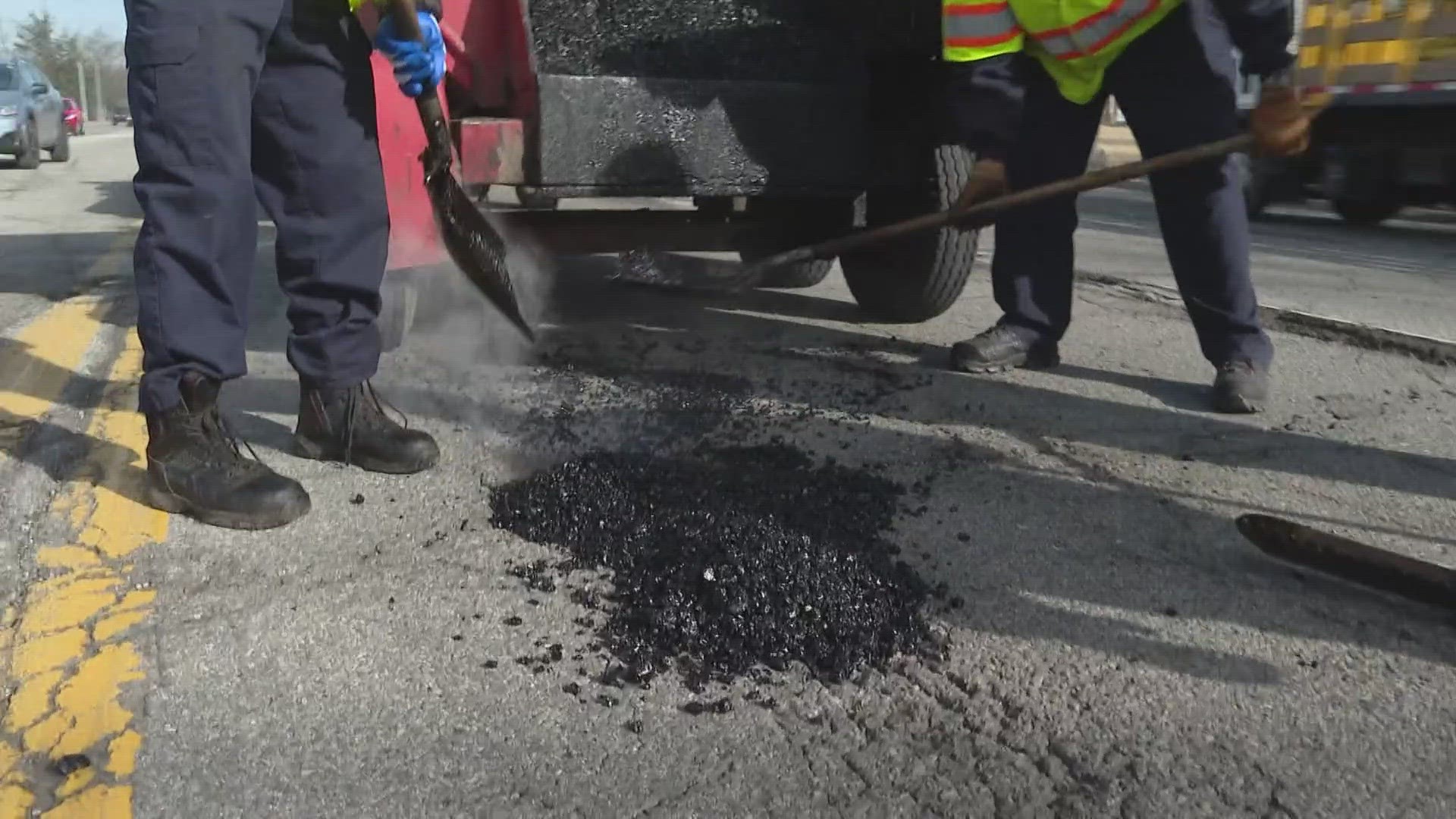Hot Mix Asphalt Paving: Elevating Commercial Parking Lot Specifications
Hot Mix Asphalt Paving: Elevating Commercial Parking Lot Specifications
Blog Article
Unlocking the Keys of Warm Mix Asphalt Technology
Discovering the midsts of warm mix asphalt technology reveals a globe where thorough processes and accurate solutions merge to shape our roadways and framework. The combination of aggregates, binders, and fillers isn't just a building and construction job but a critical orchestration of toughness and effectiveness.
Importance of Warm Mix Asphalt
Hot Mix Asphalt plays a vital duty in modern-day facilities development as a result of its resilience and cost-effectiveness. As the most commonly made use of paving material for roadways, freeways, and car parking lots, Warm Mix Asphalt provides a variety of benefits that add to its significance in building and construction tasks. One essential benefit is its capacity to stand up to hefty traffic tons and severe weather conditions, supplying a reputable and resilient surface area for transport networks. Furthermore, Warm Mix Asphalt is cost-effective in both initial building and construction and long-term upkeep, making it a favored choice for lots of infrastructure projects.
The resilience of Hot Mix Asphalt stems from its make-up, which consists of aggregates, binder, and filler products that are thoroughly selected and mixed to meet specific efficiency requirements. Overall, the significance of Hot Mix Asphalt in framework development can not be understated, as it proceeds to be a keystone of modern building and construction methods.
Components of Asphalt Mixes
The make-up of asphalt mixes includes thoroughly selected accumulations, binder, and filler products that are vital for achieving particular efficiency demands. Accumulations are the main component of asphalt blends, offering toughness and stability. These accumulations can be all-natural, such as crushed rock or smashed stone, or artificial, like recycled materials from old pavements. The binder, commonly bitumen or asphalt cement, holds the accumulations with each other and offers flexibility and toughness to the mix. The selection of the binder is critical as it directly affects the mix's efficiency in different climate condition. Fillers, such as moisturized lime or Portland cement, are made use of to enhance the mix's workability and aging resistance. Angled Parking.
The mix and proportion of these components play a considerable duty in establishing the quality and performance of the asphalt mix. Designers very carefully make the mix to satisfy specific needs, taking into consideration variables like traffic quantity, climate conditions, and pavement life expectancy. Proper option and balancing of aggregates, binder, and fillers are crucial for producing resilient, durable asphalt sidewalks.
Combining and Production Techniques

Once the aggregates are chosen, the binder, commonly asphalt concrete, is added to bind the materials with each other. The binder's quality and amount substantially impact the mix's versatility, resistance, and stamina to ecological aspects. Furthermore, fillers like hydrated lime or Rose city concrete may be incorporated to improve specific characteristics of the asphalt mix, such as its workability or wetness resistance.
Throughout manufacturing, the aggregates and binder are heated up, generally in between 250-325 ° F(121-163 ° C ), to promote mixing and make certain correct covering of the aggregates. The blending procedure must be complete to attain a homogeneous combination that advertises the desired performance qualities of the asphalt. Different techniques, such as set mixing or drum blending, are used to attain constant and top quality asphalt blends for construction tasks.
Aspects Impacting Asphalt Efficiency
Elements influencing asphalt efficiency encompass a variety of variables that impact the resilience, long life, and overall quality of asphalt pavements. One crucial aspect is the top quality of products utilized in visit here the asphalt mix.

Ecological conditions additionally influence asphalt efficiency. Temperature level variations, wetness seepage, and traffic lots can all affect the structural integrity of the pavement. Layout factors to consider, such as pavement density and water drainage, are crucial in guaranteeing the long-term efficiency of the asphalt sidewalk. By very carefully considering these professionals, variables and engineers can optimize asphalt performance and enhance the service life of sidewalks.
Lasting Practices in Asphalt Modern Technology

WMA enables for the production and her latest blog positioning of asphalt mixes at lower temperatures contrasted to standard hot-mix asphalt, resulting in decreased energy usage and greenhouse gas exhausts. The usage of porous asphalt mixes can aid alleviate stormwater drainage concerns by enabling water to infiltrate via the sidewalk and into the ground, promoting all-natural water purification and recharge procedures.
Verdict
Finally, hot mix asphalt innovation plays an essential function in modern-day facilities growth because of its resilience and cost-effectiveness. By meticulously stabilizing elements, employing correct blending strategies, and taking into consideration various aspects, engineers can produce high-grade asphalt blends that stand up to rush hour tons and harsh climate condition. Welcoming lasting practices, such as utilizing recycled products and warm-mix technologies, additionally boosts the ecological kindness of asphalt technology.
Blending and manufacturing strategies in hot mix asphalt technology include the precise combination and handling of aggregates, binder, and fillers to create a long lasting and high-performance asphalt mix.Factors influencing asphalt i thought about this performance include a range of variables that affect the durability, durability, and total high quality of asphalt pavements. Lasting methods in asphalt innovation include numerous initiatives intended at reducing the ecological impact of asphalt production and paving processes. By integrating recovered asphalt pavement (RAP) and recycled asphalt tiles (RAS) right into new asphalt mixes, the industry can considerably minimize the usage of raw materials and energy, while additionally decreasing land fill waste.
WMA permits for the production and positioning of asphalt mixes at lower temperature levels compared to typical hot-mix asphalt, resulting in decreased power usage and greenhouse gas exhausts.
Report this page